Pre-Game and Preschool
Let’s clarify the difference between exposure to sheep and “starting a dog”. Mott and Jolene have been around sheep both at Pat Byrne’s kennel/farm in Ireland and now my farm. They are not strangers to sheep. Lucky for me, they are not the type of pups that need an incredibly high level of supervision. Sure, the usual pup stuff, but they aren’t the type to be “freelancing” in inappropriate ways such as sneaking under gates, digging under or jumping over fences to get at the livestock or into my chicken coop.
Guard Rails
Pups whose curiosity or independence gets them into trouble are managed differently. Mott and Jolene have been able to accept some freedom on the farm. I give my pups opportunity to get into a little trouble so I can teach them about accepting a correction without it being a huge emotional blow.
Corrections are “guard rails”. There is ample room for a pup to make good choices without being put to task. The correction needs to as forceful as the pup needs but no more. I don’t want a dog getting sulky and running to me for comfort. Behaviors such as jumping on the fence (I never want a climber), digging in my garden, or stealing my Muck Boots off the porch will be corrected with a “Hey” (growly voice) and body pressure (a couple of aggressive steps in their direction) .The instant they “give up” their action I remove the pressure by walking backward or turning my back and moving away. If they do run to me I will walk away ignoring any needy behavior(and note to lighten correction next time) Unless I’ve called them to me--then I will insist they come all the way to me.
Indirect Exposure to Sheep
My dogs can hear, smell and see sheep most of the day. The sheep don’t punctuate an event they are just here. So, exposure begins immediately here. Then we bump up the experience to light interactions, and later to “starting” stage.
As of this week (pups are 16 weeks old) I began to let them join me to feed sheep. They walk with me to the barn & watch me go through the gate to feed sheep I introduce a “stay” at the gate. If they try to both through--the gate shuts on them. We’ve already done this at their crate doors so they understand the idea but it is easy to forget when there are sheep right in front of them. Once I’m on the other side I will correct if they attempt to come through the fence. This educates the pups to respect a fence even if they can squeeze thru/under. If the pup needs to be corrected more than 5 times I don’t let them out with me until they are older.
Keep it simple...I want to teach them to respect boundaries and be able to observe the sheep. If they are wildly keen and hard-headed and cannot help themselves I will manage them until they are old enough to approach the topic again--and big enough not to fit thru the fence!
Pups who stare at sheep all day are managed the same way as those who are slipping under fences. No visual or physical access to see or interact with the sheep.
Direct Exposure-Infuse Interest
Mott and Jolene both had a little go with the sheep this week. Just 5 minutes each so I could gauge their interest, let them have a positive experience, and glimpse at their method. Both were lovely but different. Mott wanted to hold the sheep on the fence, grab a little wool, and hock the sheep here and there. When the sheep looked at him he held their gaze and then tried to move them. I was thrilled with the little fellow. Jolene came right up to the sheep on the fence, squeezed through between fence and sheep and started to balance off me. She showed amazing authority and calm. I was all smiles after their sessions.
I’ve seen people take their young pups in with sheep and never set them free. Choosing to teach the pup a “call off” and letting the pup get near the sheep but not “with the sheep”. I fear these actions are not in alignment with the final result we are looking for in our exposure process. We want the young pup to have the freedom to explore their relationship with the sheep--not fight a leash/line or otherwise frustrate the ember of their interest. The goal of exposure is simple: infuse interest.
I’ve had wonderful dogs who didn’t show interest until over a year. It's worth the wait if you like your pup. These two are only 4 months old and show strong interest. We will continue to explore the sheep in small mini sessions. I am careful not to put them in harms way with sheep who might challenge or hurt them. I want them walking into the sheep pen with a happy enthusiasm, not stress and worry.
True Starts
Many decisions go into when to officially start a pup. There is no rush! Is the dog ready physically? Are they capable of dealing with corrections? Do they need corrections at all? Poorly timed corrections before the dog is emotionally ready may just ruin them.
Ace (10 months), another young dog of mine, officially started last week. I prefer to start dogs at around 6 months if they are ready. Ace was mentally ready but his body was a bit gawky. In addition, he is a keen snappy worker with quick sharp movements and fast stops. I worried for his structure. Now that he is more physically balanced he can be worked daily.
There is a frailty to the process of starting which gets missed by misreading the biting and chasing. I don’t want to ruin a dog or my relationship with them by harshly correcting them if they are unruly and disrespectful of the sheep. Often the misdirected and aggressive energy on the sheep can be resolved by simply “putting them up” for awhile. I’m amazed by the changes in attitude that a month of maturity brings.
Let’s clarify the difference between exposure to sheep and “starting a dog”. Mott and Jolene have been around sheep both at Pat Byrne’s kennel/farm in Ireland and now my farm. They are not strangers to sheep. Lucky for me, they are not the type of pups that need an incredibly high level of supervision. Sure, the usual pup stuff, but they aren’t the type to be “freelancing” in inappropriate ways such as sneaking under gates, digging under or jumping over fences to get at the livestock or into my chicken coop.
Guard Rails
Pups whose curiosity or independence gets them into trouble are managed differently. Mott and Jolene have been able to accept some freedom on the farm. I give my pups opportunity to get into a little trouble so I can teach them about accepting a correction without it being a huge emotional blow.
Corrections are “guard rails”. There is ample room for a pup to make good choices without being put to task. The correction needs to as forceful as the pup needs but no more. I don’t want a dog getting sulky and running to me for comfort. Behaviors such as jumping on the fence (I never want a climber), digging in my garden, or stealing my Muck Boots off the porch will be corrected with a “Hey” (growly voice) and body pressure (a couple of aggressive steps in their direction) .The instant they “give up” their action I remove the pressure by walking backward or turning my back and moving away. If they do run to me I will walk away ignoring any needy behavior(and note to lighten correction next time) Unless I’ve called them to me--then I will insist they come all the way to me.
Indirect Exposure to Sheep
My dogs can hear, smell and see sheep most of the day. The sheep don’t punctuate an event they are just here. So, exposure begins immediately here. Then we bump up the experience to light interactions, and later to “starting” stage.
As of this week (pups are 16 weeks old) I began to let them join me to feed sheep. They walk with me to the barn & watch me go through the gate to feed sheep I introduce a “stay” at the gate. If they try to both through--the gate shuts on them. We’ve already done this at their crate doors so they understand the idea but it is easy to forget when there are sheep right in front of them. Once I’m on the other side I will correct if they attempt to come through the fence. This educates the pups to respect a fence even if they can squeeze thru/under. If the pup needs to be corrected more than 5 times I don’t let them out with me until they are older.
Keep it simple...I want to teach them to respect boundaries and be able to observe the sheep. If they are wildly keen and hard-headed and cannot help themselves I will manage them until they are old enough to approach the topic again--and big enough not to fit thru the fence!
Pups who stare at sheep all day are managed the same way as those who are slipping under fences. No visual or physical access to see or interact with the sheep.
Direct Exposure-Infuse Interest
Mott and Jolene both had a little go with the sheep this week. Just 5 minutes each so I could gauge their interest, let them have a positive experience, and glimpse at their method. Both were lovely but different. Mott wanted to hold the sheep on the fence, grab a little wool, and hock the sheep here and there. When the sheep looked at him he held their gaze and then tried to move them. I was thrilled with the little fellow. Jolene came right up to the sheep on the fence, squeezed through between fence and sheep and started to balance off me. She showed amazing authority and calm. I was all smiles after their sessions.
I’ve seen people take their young pups in with sheep and never set them free. Choosing to teach the pup a “call off” and letting the pup get near the sheep but not “with the sheep”. I fear these actions are not in alignment with the final result we are looking for in our exposure process. We want the young pup to have the freedom to explore their relationship with the sheep--not fight a leash/line or otherwise frustrate the ember of their interest. The goal of exposure is simple: infuse interest.
I’ve had wonderful dogs who didn’t show interest until over a year. It's worth the wait if you like your pup. These two are only 4 months old and show strong interest. We will continue to explore the sheep in small mini sessions. I am careful not to put them in harms way with sheep who might challenge or hurt them. I want them walking into the sheep pen with a happy enthusiasm, not stress and worry.
True Starts
Many decisions go into when to officially start a pup. There is no rush! Is the dog ready physically? Are they capable of dealing with corrections? Do they need corrections at all? Poorly timed corrections before the dog is emotionally ready may just ruin them.
Ace (10 months), another young dog of mine, officially started last week. I prefer to start dogs at around 6 months if they are ready. Ace was mentally ready but his body was a bit gawky. In addition, he is a keen snappy worker with quick sharp movements and fast stops. I worried for his structure. Now that he is more physically balanced he can be worked daily.
There is a frailty to the process of starting which gets missed by misreading the biting and chasing. I don’t want to ruin a dog or my relationship with them by harshly correcting them if they are unruly and disrespectful of the sheep. Often the misdirected and aggressive energy on the sheep can be resolved by simply “putting them up” for awhile. I’m amazed by the changes in attitude that a month of maturity brings.
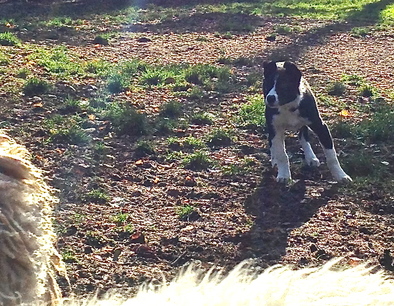
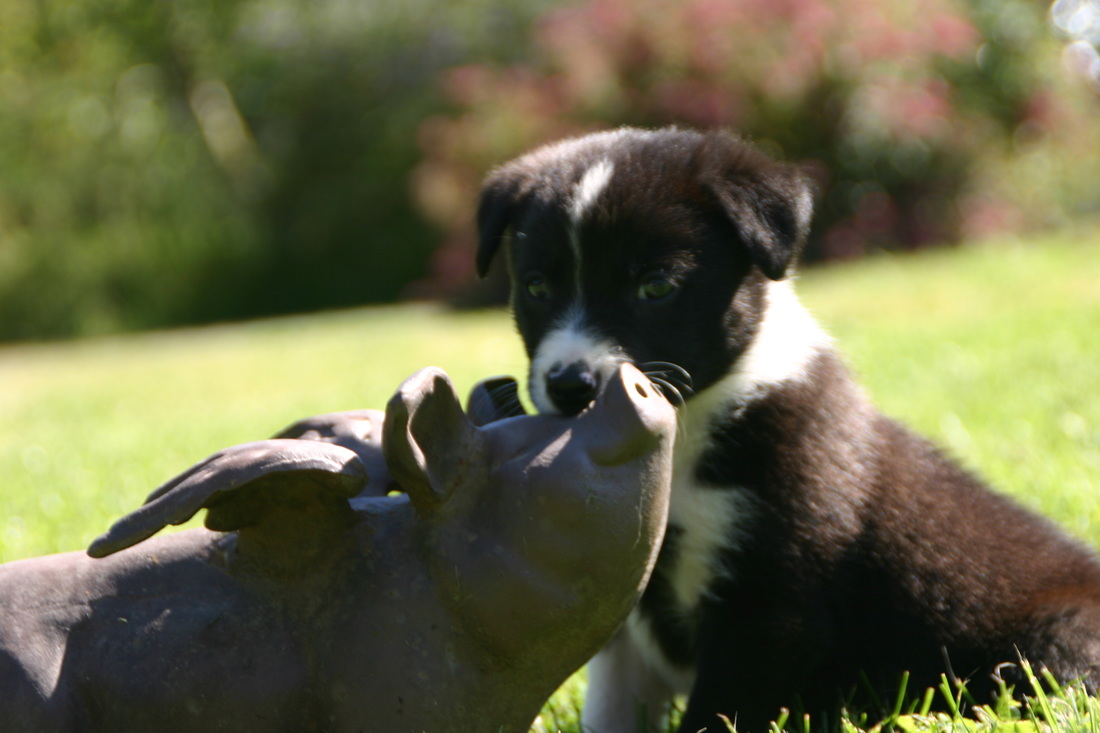
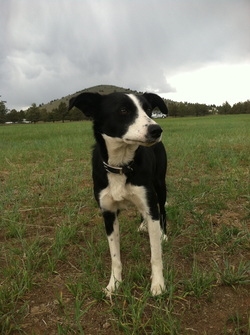
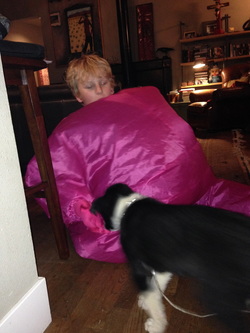
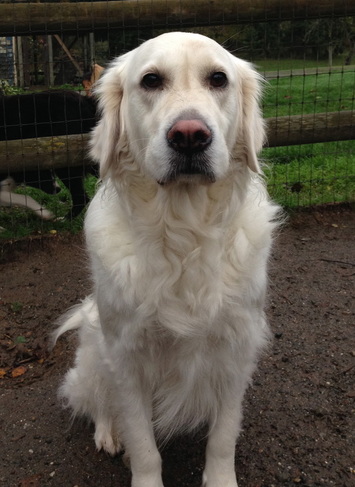
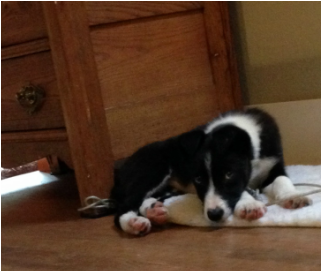
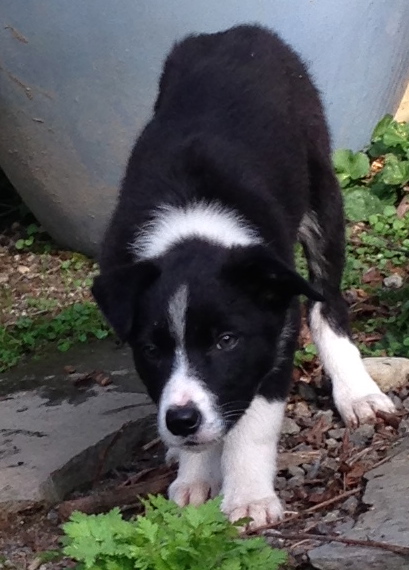
 RSS Feed
RSS Feed